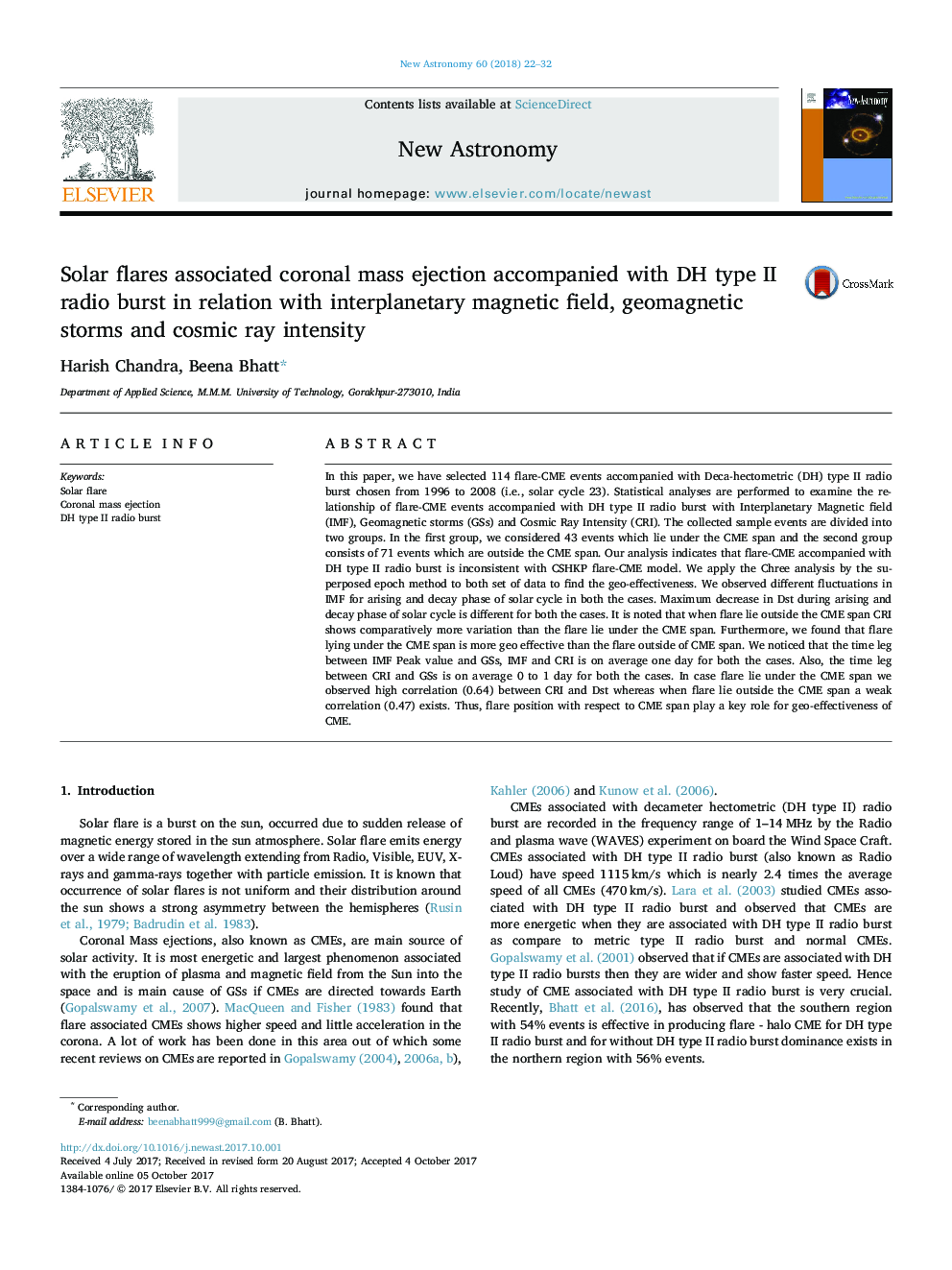| Article ID | Journal | Published Year | Pages | File Type |
|---|---|---|---|---|
| 5487714 | New Astronomy | 2018 | 11 Pages |
Abstract
In this paper, we have selected 114 flare-CME events accompanied with Deca-hectometric (DH) type II radio burst chosen from 1996 to 2008 (i.e., solar cycle 23). Statistical analyses are performed to examine the relationship of flare-CME events accompanied with DH type II radio burst with Interplanetary Magnetic field (IMF), Geomagnetic storms (GSs) and Cosmic Ray Intensity (CRI). The collected sample events are divided into two groups. In the first group, we considered 43 events which lie under the CME span and the second group consists of 71 events which are outside the CME span. Our analysis indicates that flare-CME accompanied with DH type II radio burst is inconsistent with CSHKP flare-CME model. We apply the Chree analysis by the superposed epoch method to both set of data to find the geo-effectiveness. We observed different fluctuations in IMF for arising and decay phase of solar cycle in both the cases. Maximum decrease in Dst during arising and decay phase of solar cycle is different for both the cases. It is noted that when flare lie outside the CME span CRI shows comparatively more variation than the flare lie under the CME span. Furthermore, we found that flare lying under the CME span is more geo effective than the flare outside of CME span. We noticed that the time leg between IMF Peak value and GSs, IMF and CRI is on average one day for both the cases. Also, the time leg between CRI and GSs is on average 0 to 1 day for both the cases. In case flare lie under the CME span we observed high correlation (0.64) between CRI and Dst whereas when flare lie outside the CME span a weak correlation (0.47) exists. Thus, flare position with respect to CME span play a key role for geo-effectiveness of CME.
Keywords
Related Topics
Physical Sciences and Engineering
Physics and Astronomy
Astronomy and Astrophysics
Authors
Harish Chandra, Beena Bhatt,
